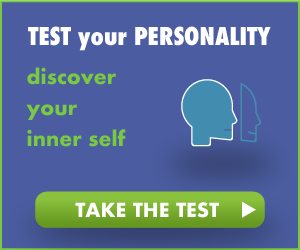Agreeableness
Agreeableness is one of the main personality traits identified by the Big Five personality model. In a broad sense, it refers to how a person relates to others, mainly if they are prosocial and people-oriented or if they are antisocial and self-focused when it comes to social interactions.1
What does Agreeableness entail?
This personality basic element is at the core of interpersonal relationships. It is what defines how a person relates to others. In other words, it reflects the predisposition of the individual to develop and maintain social relationships.2
As a factor, it seems to increase with age and the expansion of social interactions while it is noteworthy that it tends to decline towards the end of life, most likely due to the decline of cognitive abilities.3
High Agreeableness: good or bad?
Despite being linked to what are perceived as positive traits, having a high or low degree of Agreeableness is not intrinsically good or bad. It only reflects different dimensions of the wide concept of personality.
In fact, both sides of the spectrum have desirable and undesirable characteristics, depending on the perspective.
|
High Agreeableness |
|
|
Strongest traits |
The downsides |
|
|
|
Low Agreeableness |
|
|
Strongest traits |
The downsides |
|
|
Agreeableness in a work context
This personality trait is highly sought after in an organizational and business context, particularly for tasks that involve teamwork or working with other people, be it a client or in a negotiation.
Individuals with a high degree of Agreeableness tend to be more friendly, altruistic, trusting, and compliant which has a positive impact on teamwork by fostering a sense of cohesion, conflict resolution, and cooperation.4
Agreeableness can also be linked to the Support and Cooperation dimension of the Great Eight model developed by Bartram. This model oversees the competencies that can predict performance and organizational efficiency by combining personality traits, aptitudes, motivations, and interests.5
Both factors agree that the individuals with a high degree of Agreeableness and with a good score at Support and Cooperation work very well with people, understand and support others, listen to their peers, are empathic and tolerant, and are consistent with their beliefs and values which in turn complement those of the organization.6
What careers suit people with high and low Agreeableness?
People with high agreeableness seem to do particularly well in careers that require empathy and social interactions.
Potential jobs for people with an agreeable personality include:
- Politics
- Sales
- Counselor
- Nurse
- Public relations and marketing
- Teacher
- HR manager
- Customer Service Agent
- Therapist
On the other hand, people with low Agreeableness tend to thrive in careers where they can work alone and in which they can exercise their rational judgment without having to care for others’ feelings. These are jobs in which their negatively-perceived traits rather than undermine their performance actually help them to excel.
Examples of careers in which people with low Agreeableness tend to be particularly good include:
- Accountant
- Engineer
- Scientist
- Surgeon
- Critic
- Entrepreneur
- Author
- Computer programmer
References:
1 Sheese, Brad E. & Graziano, William G. (2004), Agreeableness. In Spielberger, Charles D. (Ed.), Encyclopedia of Applied Psychology. 117-121. Academic Press
2 Nguyen, Hong V. et al. (2013), Understanding Individual Variation in Student Alcohol Use. In Miller, Peter M. (ed.), Interventions for Addiction - Comprehensive Addictive Behaviors and Disorders, Volume 3. 955-965. Academic Press. https://doi.org/10.1016/C2011-0-07780-3
3 Chopik, W. J., & Kitayama, S. (2018). Personality change across the life span: Insights from a cross-cultural, longitudinal study. Journal of personality, 86(3), 508–521. https://doi.org/10.1111/jopy.12332
4 Alarcon, Gene M., Capiola, A. & Pfahler, Marc D. (2021), The role of human personality on trust in human-robot interaction. In Nam, Chang S. & Lyons, Joseph B. (Eds.) Trust in Human-Robot Interaction. Academic Press. https://doi.org/10.1016/C2018-0-04443-6
5 Bartram, D. (2002). The SHL Corporate Leadership Model: SHL White Paper. Thames Ditton: SHL Group.
6 Bartram, D. (2005). The Great Eight Competencies: a criterion-centric approach to validation. Journal of Applied Psychology, 90(6), 1185-1203. doi: 10.1037/0021-9010.90.6.1185


